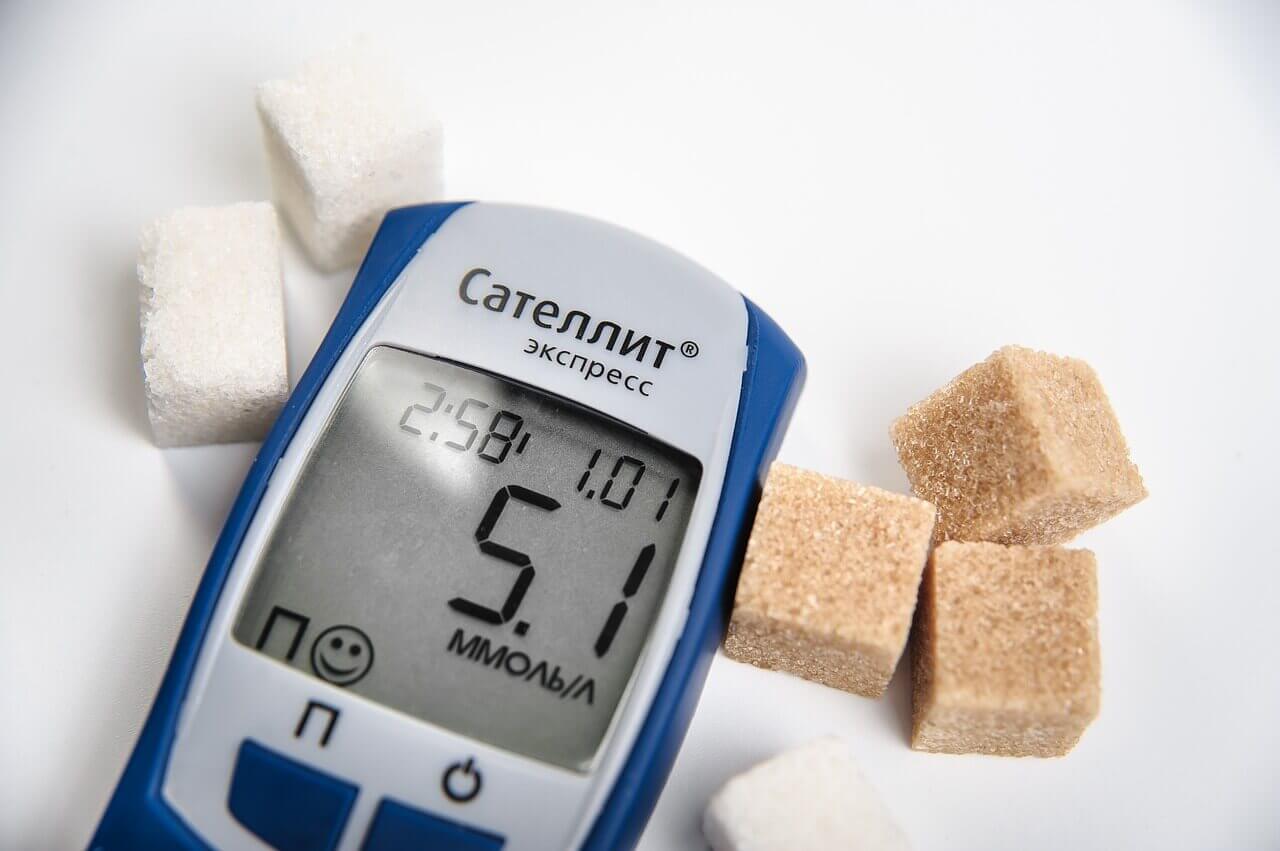7th Dangerous Disease in the USA, What you need to know about Diabetes?

What do you need to know about Diabetes?
Diabetes is a chronic disease that occurs when the pancreas does not produce enough insulin or when the body does not use the insulin that is produced effectively.
Table of Contents
ToggleLet’s see here what do you need to know about diabetes?
Insulin is a hormone that controls blood sugar levels. Hyperglycemia, or high blood sugar, is a common side effect of uncontrolled diabetes, and it can cause serious damage to many of the body’s systems, particularly the nerves and blood vessels, over time.
The majority of the food you eat is converted into sugar (also known as glucose) and released into your bloodstream. When your blood sugar rises, your pancreas sends a signal to release insulin. Insulin functions as a key, allowing blood sugar to enter cells and be used as energy.
If you have diabetes, your body either does not produce enough insulin or does not use the insulin produced as efficiently as it should.
Too much blood sugar remains in your bloodstream when there is insufficient insulin or when cells stop responding to insulin. This can lead to serious health issues such as heart disease, vision loss, and kidney disease over time.
Diabetes does not yet have a cure, but losing weight, eating healthy foods, and staying active can all help.
Taking medication as needed, receiving diabetes self-management education and support, and attending health-care appointments can all help to lessen the impact of diabetes on your life.
Diabetes affects in the USA:
According to the National Diabetes Statistics Report, diabetes is one of the diseases in leading causes of death list. It is the 7th Dangerous disease in the USA.
In 2018, crude estimates for the US population as a whole were: • 34.2 million people of all ages (or 10.5 percent of the US population) had diabetes.
• Diabetes affected 34.1 million adults aged 18 and up, or 13.0 percent of all adults in the United States (Table 1a; Table 1b).
• 7.3 million adults aged 18 and up who met laboratory criteria for diabetes were either unaware of their diabetes or did not report having it (undiagnosed diabetes, Table 1b). This figure represents 2.8 percent of all adults in the United States (Table 1a), and 21.4 percent of all adults in the United States have diabetes.
• The percentage of adults with diabetes increased with age, peaking at 26.8 percent among those 65 and older.
Diabetes affects found more among men.
According to the latest Behavioral Risk Factor Surveillance System (BRFSS) data, West Virginia has the highest adult diabetes rate (15.7%), while Colorado has the lowest (7.5%).
The adult diabetes rate grew in Montana between 2019 and 2020, while it declined in Idaho and South Dakota. The South is home to 11 of the 16 states with the highest incidence of type 2 diabetes.
What are the different types of Diabetes:
Diabetes is classified into three types:
1.Type 1,
2.Type 2, and
3.Gestational diabetes.
Site Wide 40% OFF – Please Use Coupon Code -PAL40
Symptoms of Diabetes:
If you have any of the following diabetes symptoms, make an appointment with your doctor to have your blood sugar checked:
- Urinate a lot, during at night
- Feeling very thirsty
- Lose weight without trying
- Feeling very hungry
- Have a blurry vision
- Have numb or tingling hands or feet
- Feeling very tired
- Have dry skin
- Have sores that heal slowly
- Have more infections than usual
What is Type 1 Diabetes?
When you have type 1 diabetes, your pancreas either does not produce insulin or produces very little insulin. Insulin is a hormone that aids in the transport of blood sugar into cells where it can be used for energy.
Without insulin, blood sugar cannot enter cells and accumulates in the bloodstream. High blood sugar is harmful to the body and contributes to many of the symptoms and complications associated with diabetes.
Type 1 diabetes (previously known as insulin-dependent diabetes or juvenile diabetes) is most commonly diagnosed in children, teenagers, and young adults, but it can occur at any age.
Type 1 diabetes is less common than type 2 diabetes; approximately 5-10% of diabetics have type 1.
No one knows how to prevent type 1 diabetes at this time, but it can be managed by adhering to your doctor’s recommendations for living a healthy lifestyle, managing your blood sugar, getting regular health checkups, and receiving diabetes self-management education and support.
What Is the Cause of Type 1 Diabetes?
Type 1 diabetes is thought to be caused by an autoimmune reaction (the body mistakenly attacking itself) that destroys the beta cells in the pancreas, which produce insulin. This process can take months or years before symptoms appear.
Some people have certain genes (traits passed down from parent to child) that make them more likely to develop type 1 diabetes, but many people do not develop type 1 diabetes despite having the genes.
Being exposed to an environmental trigger, such as a virus, is also thought to play a role in the development of type 1 diabetes. Type 1 diabetes is not caused by diet or lifestyle choices.
Symptoms of Type 1 Diabetes:
Along with the above-mentioned symptoms:
- Nausea,
- vomiting, and
- stomach pains are common symptoms of type 1 diabetes.
Symptoms of type 1 diabetes can appear in as little as a few weeks or months, and they can be severe. Type 1 diabetes usually begins in childhood, adolescence, or young adulthood, but it can strike at any age.
What is Type 2 Diabetes?
Your body can’t use insulin properly and can’t keep blood sugar at normal levels if you have type 2 diabetes.
Type 2 diabetes affects 90-95 percent of diabetics. It takes many years to develop and is usually diagnosed in adults (but more and more in children, teens, and young adults).
If you’re at risk, get your blood sugar checked because you might not notice any symptoms. Type 2 diabetes can be avoided or delayed by adopting a healthy lifestyle that includes losing weight, eating healthy foods, and staying active.
What Is the Cause of Type 2 Diabetes?
Insulin is a hormone produced by your pancreas that acts as a key to allowing blood sugar into your body’s cells for energy use. Insulin resistance occurs when cells in people with type 2 diabetes do not respond normally to insulin.
To get cells to respond, your pancreas produces more insulin. When your pancreas can no longer keep up, your blood sugar levels rise, triggering prediabetes and type 2 diabetes.
High blood sugar is harmful to the body and can lead to heart disease, vision loss, and kidney disease, among other serious health issues.
Symptoms of Type 2 Diabetes:
Diabetes symptoms above mentioned, and Symptoms of type 2 diabetes can take years to appear.
Some people are completely oblivious to any symptoms.
Type 2 diabetes usually strikes adults, but it is increasingly affecting children and teenagers.
Because symptoms can be difficult to detect, knowing the risk factors for type 2 diabetes is crucial. If you have any of these symptoms, make an appointment with your doctor.
What is Gestational Diabetes?
Gestational diabetes is a type of diabetes that can develop in women who do not already have diabetes during pregnancy.
In the United States, gestational diabetes affects between 2% and 10% of pregnancies each year. Taking care of your gestational diabetes will help you have a healthy pregnancy and baby.
What Is the Cause of Gestational Diabetes?
When your body doesn’t make enough insulin during pregnancy, you get gestational diabetes. Insulin is a hormone produced by your pancreas that acts as a key to allowing blood sugar into your body’s cells for energy use.
Your body produces more hormones and undergoes other changes during pregnancy, such as weight gain. Insulin resistance is a condition in which your body’s cells use insulin less effectively as a result of these changes. Insulin resistance raises your body’s insulin requirements.
During late pregnancy, all pregnant women experience some insulin resistance. Some women, however, are insulin resistant even before they become pregnant. They have a higher insulin requirement at the start of pregnancy and are more likely to develop gestational diabetes.
Symptoms of Gestational Diabetes:
Symptoms for Gestational Diabetes are usually absent.
If you’re expecting a child, your doctor should test you for gestational diabetes between weeks 24 and 28. You can make changes to protect your health and the health of your baby if necessary.
Associated Health Issues with Gestational Diabetes:
Pregnancy can increase your risk of high blood pressure if you have gestational diabetes. It can also increase your chances of having a large baby who requires a cesarean delivery (C-section).
If you have gestational diabetes, your baby is more likely to develop the following problems:
- Being extremely large (9 pounds or more), which can complicate delivery
- Early birth, which can cause breathing and other issues
- Low blood sugar levels
The later-life onset of type 2 diabetes:
After your baby is born, your blood sugar levels should return to normal. However, about half of women who develop gestational diabetes go on to develop type 2 diabetes later in life.
After delivery, you can reduce your risk by maintaining healthy body weight. 6 to 12 weeks after your baby is born, see your doctor have your blood sugar checked, and then every 1 to 3 years after that.
Diabetes Testing:
If you have diabetes, a simple blood test will reveal it. If you had your blood sugar checked at a health fair or pharmacy, go to a clinic or doctor’s office to double-check the results.
Your blood may be tested for autoantibodies (substances that indicate your body is attacking itself) if your doctor suspects you have type 1 diabetes.
Autoantibodies are common in type 1 diabetes but not in type 2. Ketones (produced when your body burns fat for energy) may be detected in your urine, indicating type 1 diabetes rather than type 2.
Please be aware of symptoms of diabetes and a simple blood test will indicate your blood sugar. So, early finding out of diabetes will help you start your treatment early and control your diabetes.
#knowaboutdiabetes #diabetespregnancy #diabetescontrol #knowdiabetes #diabetesawarenessmonth #typediabetesforever #healthydiabeticfoods #diabeticdietitian #notodiabetesmedication #prediabetescounseling #monitoringsugardaily #stopdiabetescure #lifewithtype1diabatesmellitus
#diabetesintheusa #diabetesUSA #diabetesisepidemicintheUS #type1diabetesUSA #diabetesstatisticsinUSA #prediabetesinUSA


